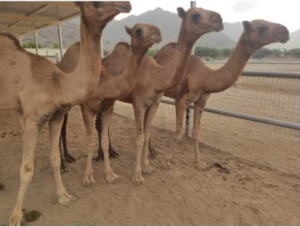
Reviving a High-Yield Milking Camel through Cloning
Somatic Cell Nuclear Transfer (SCNT) is a cutting-edge breeding technique that allows for the rapid multiplication of animals with superior genetic traits. Recently, this technology has been applied to clone champion camels in the Arabian Peninsula for various purposes, including racing, beauty contests, and milk production. Cloning offers the potential to significantly boost the production of camel milk, which is highly valued in Middle Eastern countries for its health benefits. However, camels naturally produce less milk than cattle, averaging about 6.0 ± 0.12 kg per day. This is further limited by factors like delayed puberty and long intervals between calving, leading to a high demand for camels that can produce more milk.
The success of SCNT heavily depends on the quality of the donor cells, usually obtained from a skin biopsy of the chosen camel. These cells are used to create a fibroblast cell line, which provides the diploid cells needed for cloning. Despite this well-established procedure, collecting skin tissue from deceased camels can be challenging, particularly if there is a delay between the animal's death and the autopsy.
A notable case involved a high milk-producing Pakistani camel at the Fujairah Research Centre, in collaboration with the UAE Biotech Research Centre. The camel was exhumed 46 hours after burial, and ear tissue was successfully used to establish a fibroblast cell line. This led to the production of four cloned calves from a group of 95 camels, with 33 serving as oocyte donors and 62 as recipients.
The cloning process involved collecting Cumulus Oocyte Complexes (COCs) from super-stimulated camels using ultrasound-guided ovum pick-up (OPU). The embryos were then transferred into synchronized recipients, with pregnancies confirmed through hormonal assays and ultrasound. However, the results showed that increasing the number of blastocysts per recipient does not improve pregnancy outcomes. Thus, transferring single or double unhatched or hatching blastocysts is recommended to maximize pregnancy rates.
This research in FRC highlights the complex challenges and considerations involved in camel cloning, which, despite its potential, requires careful management of biological and technical factors to succeed.
